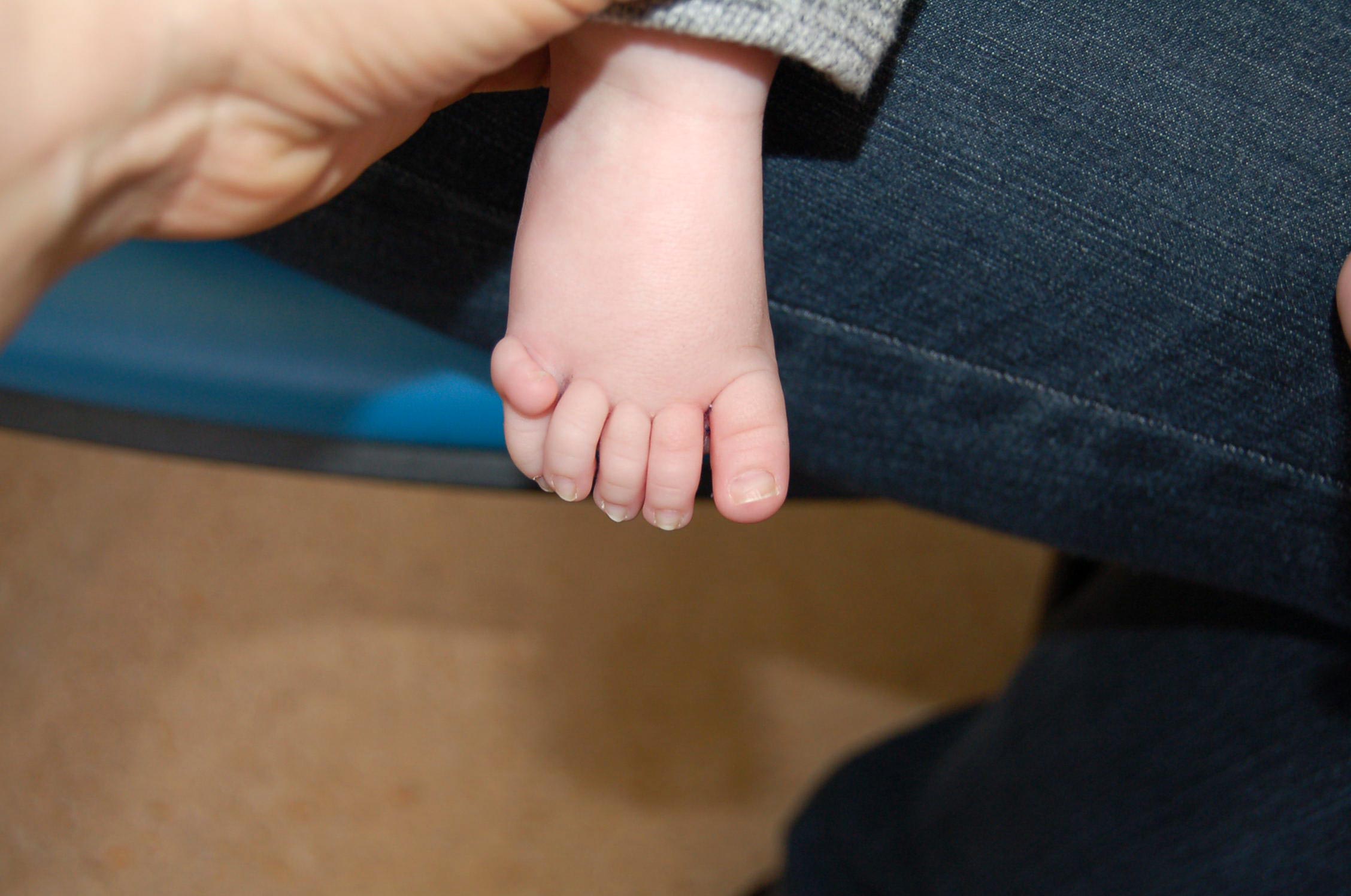The foot of one of the children in the study, showing an extra toe. Credit: University of Leeds
A new genetic disorder linked to extra digits and neurological issues has been identified by an international research team.
This disorder, caused by mutations in the MAX gene, may be treatable with a molecule currently under trial for another condition.
Discovery of a New Genetic Disorder
New research co-led by the University of Leeds has identified a rare disorder that causes babies to be born with extra fingers and toes and a range of birth defects.
The disorder, which has not yet been named, is caused by a genetic mutation in a gene called MAX. As well as extra digits – polydactyly – it leads to a range of symptoms relating to ongoing brain growth, such as autism.

One of the children in the study. Macrocephaly is a condition descrtibing an enlarged head circumference. Credit: University of Leeds
Potential Treatments on the Horizon
The research marks the first time this genetic link has been identified. It has also found a molecule that could potentially be used to treat some of the neurological symptoms and prevent any worsening of their condition. However, more research is needed to test this molecule before it can be used as a treatment.
Published in the American Journal of Human Genetics, the paper focuses on three individuals with a rare combination of physical traits, namely polydactyly, and a much larger than average head circumference – known as macrocephaly.
The individuals share some other characteristics, including delayed development of their eyes which results in problems with their vision early in life.
The researchers compared the DOI: 10.1016/j.ajhg.2023.11.010





















Discussion about this post